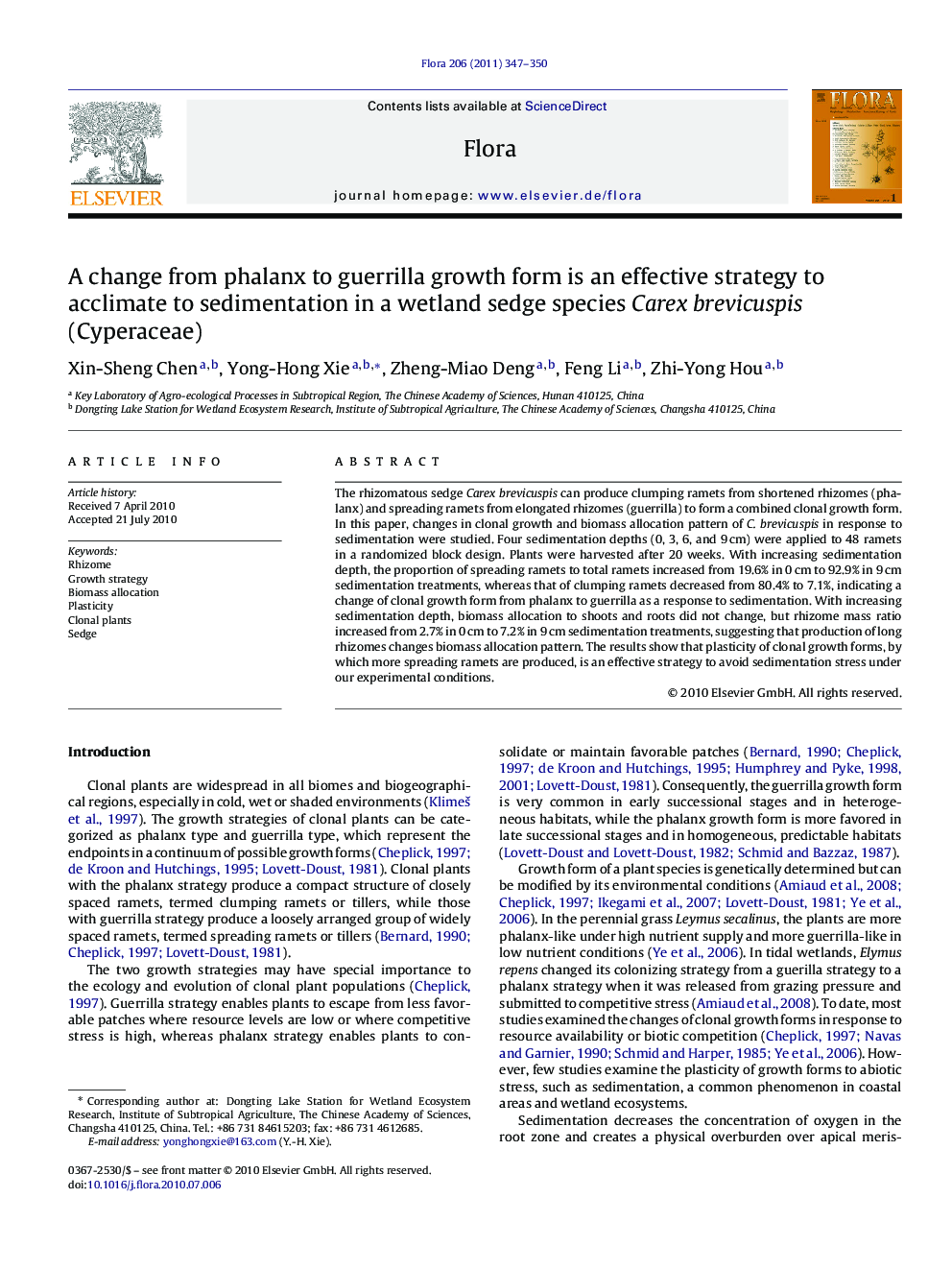| کد مقاله | کد نشریه | سال انتشار | مقاله انگلیسی | نسخه تمام متن |
|---|---|---|---|---|
| 2180071 | 1095106 | 2011 | 4 صفحه PDF | دانلود رایگان |

The rhizomatous sedge Carex brevicuspis can produce clumping ramets from shortened rhizomes (phalanx) and spreading ramets from elongated rhizomes (guerrilla) to form a combined clonal growth form. In this paper, changes in clonal growth and biomass allocation pattern of C. brevicuspis in response to sedimentation were studied. Four sedimentation depths (0, 3, 6, and 9 cm) were applied to 48 ramets in a randomized block design. Plants were harvested after 20 weeks. With increasing sedimentation depth, the proportion of spreading ramets to total ramets increased from 19.6% in 0 cm to 92.9% in 9 cm sedimentation treatments, whereas that of clumping ramets decreased from 80.4% to 7.1%, indicating a change of clonal growth form from phalanx to guerrilla as a response to sedimentation. With increasing sedimentation depth, biomass allocation to shoots and roots did not change, but rhizome mass ratio increased from 2.7% in 0 cm to 7.2% in 9 cm sedimentation treatments, suggesting that production of long rhizomes changes biomass allocation pattern. The results show that plasticity of clonal growth forms, by which more spreading ramets are produced, is an effective strategy to avoid sedimentation stress under our experimental conditions.
Journal: Flora - Morphology, Distribution, Functional Ecology of Plants - Volume 206, Issue 4, April 2011, Pages 347–350